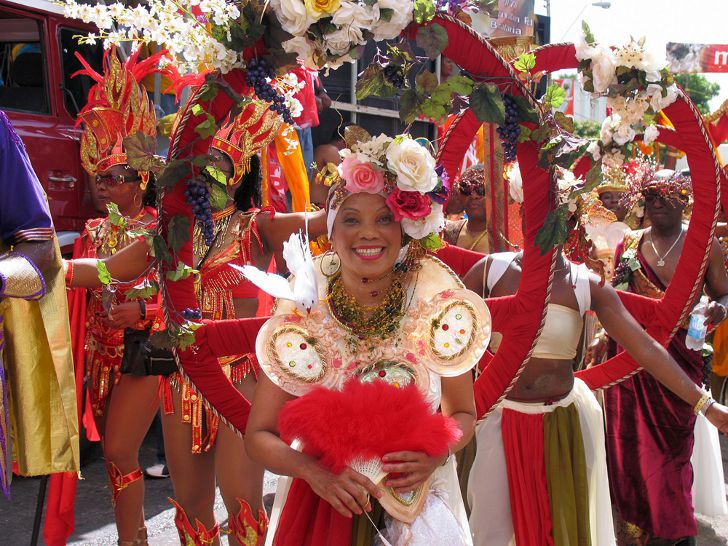The Carnival of Trinidad and Tobago dates back to the 18th century when French planters organized masquerade balls during the Shrovetide season. The slaves were not allowed to participate but they had there own celebration called Canboulay. Canboulay played a crucial role in the development of calypso music, a style of Afro-Caribbean music that became the voice of people during the colonial period.
Trinidadian Carnival as it’s known today began to form after the abolition of slavery in the 1830s. Local planters compensated for the loss of their slaves by importing workers from different countries so the Carnival of Trinidad and Tobago is based on a unique amalgamation of different cultures, primarily European, African, Chinese, Indian, Amerindian, and even Middle Eastern.
The Carnival officially opens on Carnival Monday (Lundi Gras) but the first significant Carnival event is held on Carnival Sunday. It is the election of the King and Queen of Carnival who preside over the festivities.
The official opening of the Carnival in most Caribbean countries, including Trinidad and Tobago, is called J’ouvert. It’s a massive street party that involves thousands of revelers dressed up in elaborate costumes adorned with sequins and feathers, calypso and steelpan musicians, and specific Carnival characters. These characters include Pierrot Grenade, minstrels, Midnight Robber, Jab Molassie, Dame Lorraine, and Burrokeet.
The main highlight of Trinidadian Carnival is the annual musical contest. Dozens of local bands compete for the title of Calypso Monarch which is considered to be one of the country’s greatest honors. Along with the title comes a tangible prize. Other prestigious titles include the International Soca Monarch, the King and Queen of the Bands, Panorama (for steelbands), and the Carnival Road March.
Other Carnival activities include mas (masquerade), numerous parties, dancing and singing. The revelry does on until Tuesday midnight. Although Ash Wednesday is not an official holiday, many people take the day off and spend it on the beach.

Photo: Irina Surgund




